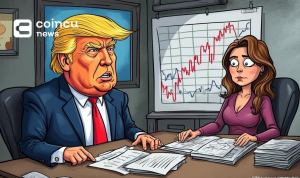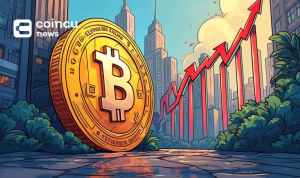Cryptocurrencies can be traded through an exchange or as a CFD with a broker of your choice. One of the costs associated with crypto trading is the possibility of negative slippage. The crypto market can be very volatile and there can be massive fluctuations in the price of a crypto asset within a short period of time. In cryptocurrency, slippage is the difference between the price of a crypto asset when you place the trade and when the transaction was actually executed.
The term slippage is not exclusive to cryptocurrencies as it applies to other financial markets. The crypto trader needs to be very conscious of slippage because many times the volatility of the crypto market surpasses other financial markets (like forex) and slippage can have a tangible impact on profitability.
Why Slippage Occurs When Trading Cryptocurrencies
Slippage is mostly determined by the volatility and liquidity of any financial instrument. The crypto market is still young when compared to more established financial markets like forex and stocks. As a result, small news announcements can massively increase the volatility of a crypto asset causing prices to witness great highs or incredible lows. Also, slippage is determined by the number of buyers and sellers of a specific crypto asset. Low liquidity is when there are not enough buyers and sellers to fill an order at the requested price and this can lead to high slippage. Slippage can be negative or positive. To stay safe from negative slippage, many crypto traders always set their slippage tolerance when trading crypto assets. This is literally an instruction to your exchange or broker to only execute a trade when it is within your slippage tolerance. To totally avoid the stress of constantly monitoring slippage, you can choose to trade with reputable no slippage brokers.
3 Easy Ways To Avoid Slippage In Cryptocurrency
Positive slippage is good news for crypto traders as orders are fulfilled at a better price than the price at which the order was initiated. The bad news is negative slippage which can lead to massive losses if not controlled. It is very difficult to predict if a specific crypto trade will have a negative or positive slippage until it is actually executed by your chosen exchange or broker.
Due to the volatility of the crypto market, it may not be possible to completely avoid slippage but there are definitely ways to minimize losses from negative slippages
Monitor Crypto News And Events
There is most times increased volatility in the crypto market during important events and news announcements. Volatility is known to be one of the main factors influencing slippage in the crypto market. During major news announcements or events, the prices of crypto assets fluctuate a lot which causes slippage. Some crypto traders could be lucky to experience massive positive slippage during these periods of increased volatility. It is important to note that negative slippage is also a very likely occurrence. As a crypto trader seeking to minimize losses from negative slippage, it is advisable to always monitor crypto news and events before placing trades. You can easily monitor crypto news via Twitter and popular crypto blogs. You can even choose to completely avoid trading during major events like the fed meeting.
Avoid Cryptocurrencies With Low Liquidity
Another route to minimize slippage losses is to only trade cryptocurrencies with high liquidity. It can be very tempting to focus on investing in unpopular cryptocurrencies that are usually lower priced. The challenge is that many of these unpopular cryptos have low trading volume and slippage is more likely to occur when trading them. It is advisable to focus your crypto trading on high-liquidity cryptocurrencies like BTC/USD, ETC/USD, USDT/USD, and BNB/USD.
Place Limit Orders Instead of Market Orders
So far, we have only looked at ways to minimize slippage losses. It is possible to completely eliminate negative slippage in the crypto market by placing limit orders instead of market orders. Limit order simply means you set a trade to be executed at a future price while a market order is executed immediately after it is opened. The idea of using a limit order looks very fancy but the challenge is that there is no guarantee that a specific crypto asset will get to the limit order price for your trade to be executed.
Conclusion On Dealing With Slippage In Cryptocurrency
Volatility and liquidity are the major factors that influence the slippage value in the crypto market. Slippage is a normal part of crypto trading and can be negative or positive. It is very unlikely that any crypto investor will dislike positive slippage as this gives them a better price than the initial price they planned to trade at. The challenge is with minimizing or eliminating unplanned slippage losses which can be very frustrating. After implementing ways to avoid slippage, it is still advisable to always set your slippage tolerance before initiating any crypto trade with an exchange or broker.























